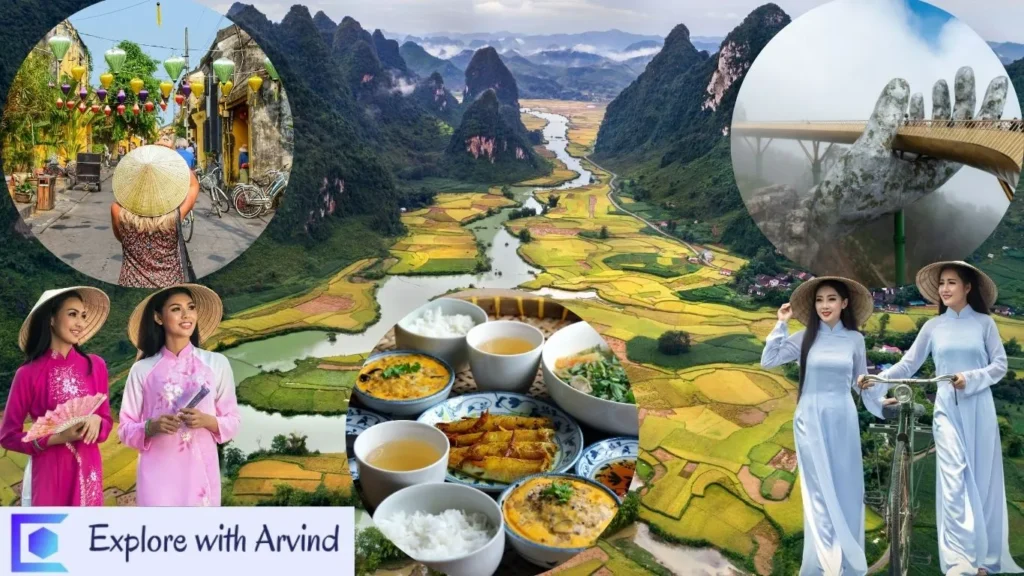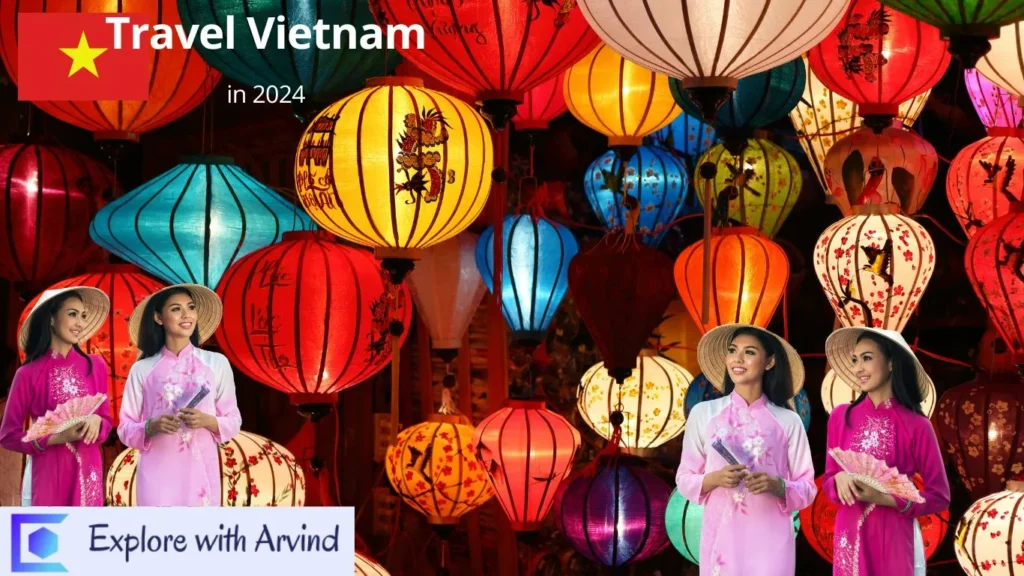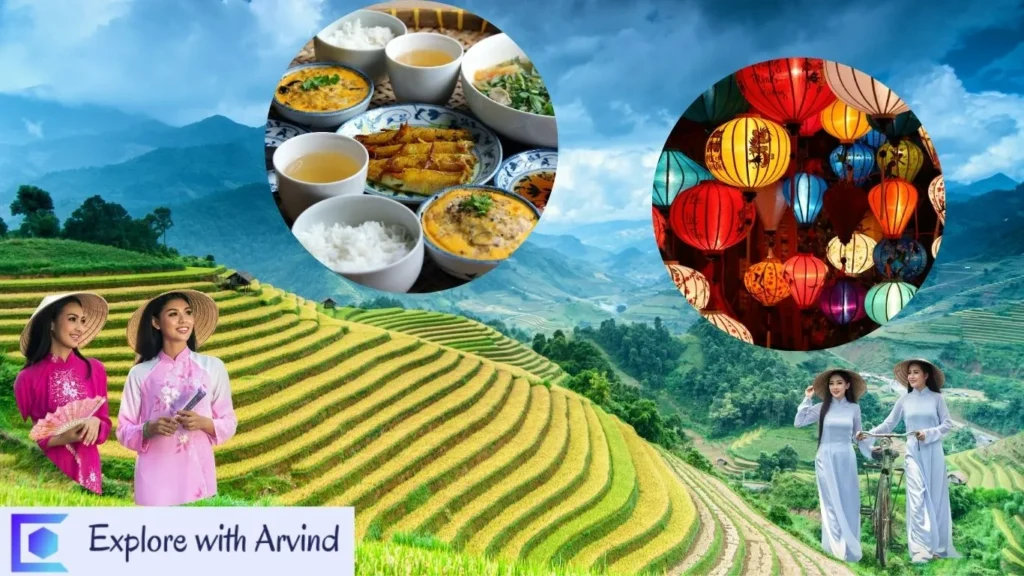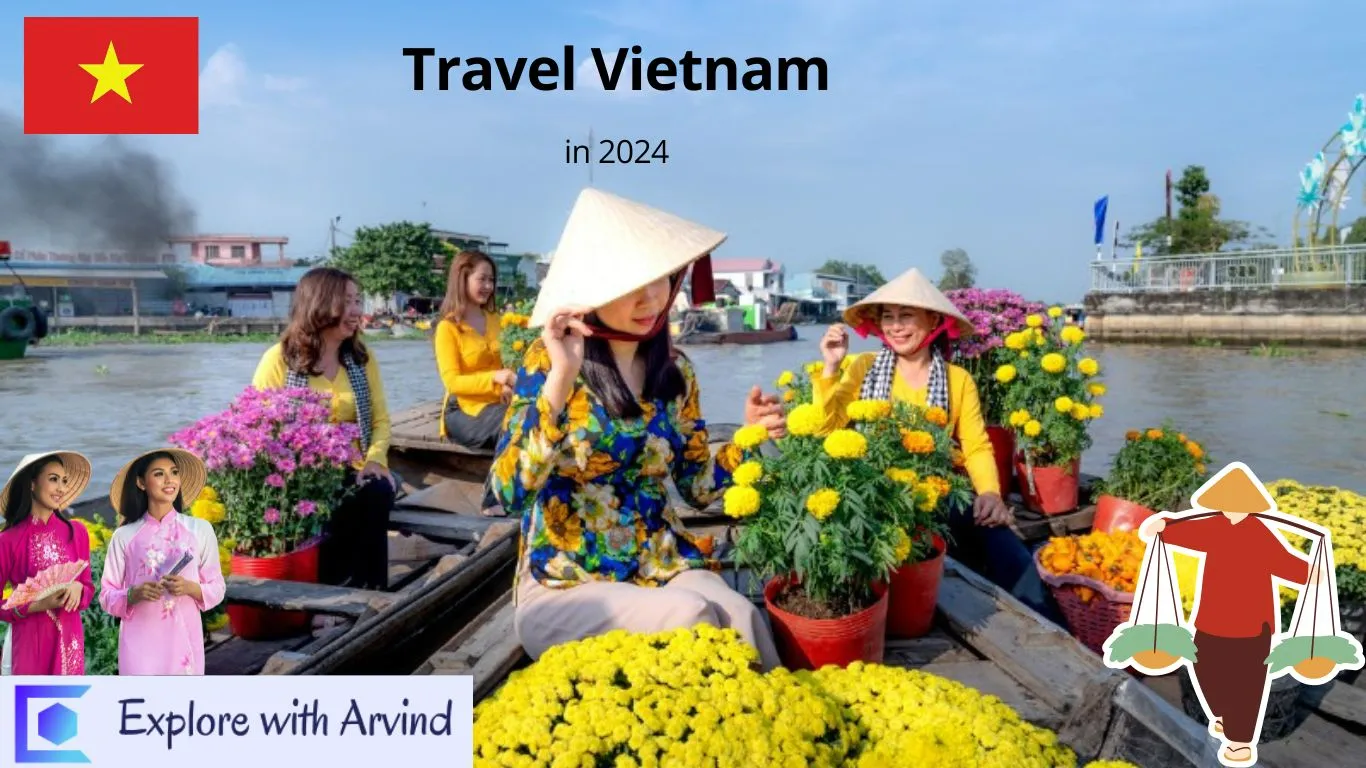Table of Contents
ToggleVietnam Tour in 2024: Indulge in Rich Cultural Heritage
Vietnam is a country of diverse landscapes, rich history, and a vibrant culture that draws travelers from around the globe. From the bustling cities to serene countryside, lush rice terraces to pristine beaches, Vietnam offers a wide range of experiences for every kind of traveler. In this article, we will explore the top tourist attractions and provide essential travel information to make your visit to this Southeast Asian gem unforgettable.
Landmarks like the beautifully preserved Hoi An Ancient Town, a UNESCO World Heritage site that highlights a historic trading port influenced by various architectural styles. This stunning country is celebrated for its natural beauty, historical significance, and vibrant cultural diversity.

Top Tourist Attractions in Vietnam
Hanoi: The Heart of Vietnam
Hanoi, the capital city, blends modernity with ancient traditions. Its streets are filled with motorbikes, ancient temples, and French colonial architecture. Key attractions include:
Hoan Kiem Lake: A peaceful spot in the city’s center, perfect for morning walks or watching the sunset. Nearby is Ngoc Son Temple, which sits on a small island in the lake.
Old Quarter: A bustling area with narrow streets and a vibrant atmosphere, ideal for tasting street food and shopping for souvenirs. Don’t miss trying pho and bun cha, local delicacies.
Ho Chi Minh Mausoleum: Pay your respects to the founding father of Vietnam at this impressive structure.
Halong Bay: Natural Wonder of the World
A UNESCO World Heritage Site, Halong Bay is famous for its emerald waters and thousands of limestone islands. The best way to explore the bay is through a cruise that takes you to hidden caves, floating fishing villages, and secluded beaches. Kayaking, swimming, and exploring Sung Sot Cave (Surprise Cave) are must-do activities here.
Sapa: Rice Terraces and Ethnic Diversity
Nestled in the northern mountains, Sapa is known for its terraced rice fields, which change colors with the seasons. Trekking through Muong Hoa Valley, visiting local hill tribe villages like the Hmong and Red Dao, and staying at a homestay are popular activities. The views from Fansipan Mountain, the highest peak in Indochina, are breathtaking, especially if you take the cable car to the summit.
Hue: The Imperial City
Hue was the capital of Vietnam during the Nguyen Dynasty, and it retains a regal atmosphere with its ancient architecture and riverside charm. Key sites include:
Imperial City (Citadel): A vast complex of palaces, temples, and gardens that served as the royal quarters.
Thien Mu Pagoda: A historic pagoda offering panoramic views of the Perfume River.
Royal Tombs: The elaborately decorated resting places of emperors, such as the Tomb of Minh Mang and Khai Dinh.
Hoi An: Ancient Town and Lanterns
Hoi An is a well-preserved trading port from the 15th century, known for its charming old town, Japanese Covered Bridge, and colorful lanterns that light up the streets at night. Stroll along the Thu Bon River, visit tailors for custom-made clothes, and explore nearby beaches like An Bang Beach. Don’t miss the Full Moon Lantern Festival, where the town transforms with a magical glow.
Da Nang: Coastal City with a Modern Vibe
Da Nang is a coastal city known for its stunning beaches, modern skyline, and access to historical sites. Key attractions include:
Marble Mountains: A cluster of limestone and marble hills with caves, temples, and viewpoints.
Golden Bridge: Located in the Ba Na Hills resort, this stunning bridge held up by giant hands offers incredible views over the surrounding mountains.
My Khe Beach: One of the most beautiful beaches in Vietnam, ideal for water sports and relaxation.
Ho Chi Minh City: Vibrant Metropolis
Formerly known as Saigon, Ho Chi Minh City is the economic hub of Vietnam, with a dynamic energy that contrasts with the tranquil countryside. Top attractions include:
War Remnants Museum: Provides insight into the Vietnam War from the local perspective.
Notre-Dame Cathedral Basilica: A striking example of French colonial architecture.
Ben Thanh Market: A bustling market where you can find local products, souvenirs, and delicious street food.
Mekong Delta: Life on the Water
The Mekong Delta is a maze of rivers, swamps, and islands where life is centered around the water. Take a boat tour to explore the floating markets of Cai Rang or Phong Dien, visit traditional fruit orchards, and learn about local handicrafts. The delta is also home to lush landscapes and diverse wildlife, making it perfect for nature lovers.

Essential Travel Information
Best Time to Visit
Northern Vietnam (Hanoi, Sapa, Halong Bay): October to April, when the weather is cooler and less humid.
Central Vietnam (Hoi An, Da Nang, Hue): February to August, with sunny days perfect for beach activities.
Southern Vietnam (Ho Chi Minh City, Mekong Delta): November to March, during the dry season.
Travel Tips
Visa Requirements: Many nationalities require a visa to enter Vietnam, which can be obtained online through an e-visa system or upon arrival at major airports. For Indians, a single entry VISA fee is $28.
Currency: The official currency is the Vietnamese Dong (VND). ATMs are widely available, but it’s advisable to carry cash, especially in remote areas. (Roughly 1 INR=300 VND)
Language: Vietnamese is the official language, but English is commonly spoken in tourist areas and larger cities.
Transportation: Vietnam has an extensive network of buses, trains, and domestic flights. For short distances, taxis, motorbike taxis (Xe Om), and ride-hailing apps like Grab are popular.
Cultural Etiquette
Dress Modestly: Especially when visiting temples and religious sites. Cover your shoulders and avoid wearing shorts.
Respect Local Customs: Remove your shoes before entering someone’s home or certain places of worship. A slight bow is a sign of respect.
Bargaining: Haggling is common in markets and smaller shops, but always with a friendly attitude.
Food to Try
Vietnamese cuisine is fresh, flavorful, and diverse, with regional specialties. Some must-try dishes include:
Pho: A famous noodle soup with beef or chicken, flavored with herbs and spices.
Banh Mi: A Vietnamese sandwich with various fillings, such as grilled pork or tofu, served in a crispy baguette.
Cao Lau: A unique noodle dish from Hoi An, made with thick noodles, slices of pork, fresh greens, and crunchy croutons.
Che: A sweet dessert soup with a variety of ingredients like beans, fruit, and coconut milk.

Travel Itineraries: Explore at Your Own Pace
Classic 10-Day Itinerary
Day 1-2: Hanoi – Explore Old Quarter and Hoan Kiem Lake.
Day 3-4: Halong Bay – Cruise and kayaking.
Day 5-6: Hoi An – Discover ancient streets and enjoy the beach.
Day 7: Hue – Visit the Imperial City and Royal Tombs.
Day 8-9: Ho Chi Minh City – City tour and War Remnants Museum.
Day 10: Mekong Delta – Day trip to explore floating markets.
Adventure-Focused Itinerary
Day 1-3: Trekking in Sapa and Fansipan Mountain.
Day 4-5: Ha Giang Loop – Explore stunning northern landscapes by motorbike.
Day 6-7: Phong Nha-Ke Bang National Park – Cave exploration in the largest cave system in the world.
Conclusion
Vietnam is a captivating destination that offers a blend of nature, history, and modernity. Whether you’re looking to explore ancient temples, hike through misty mountains, or simply unwind on a tropical beach, Vietnam has something to offer. With its warm hospitality, delicious cuisine, and stunning landscapes, a journey through Vietnam is bound to be an adventure you’ll remember for a lifetime. Pack your bags, get ready to immerse yourself in rich traditions, and let Vietnam’s charm unfold before you!
